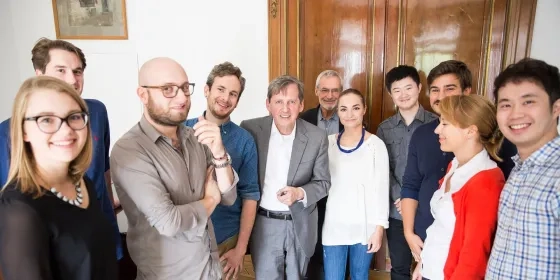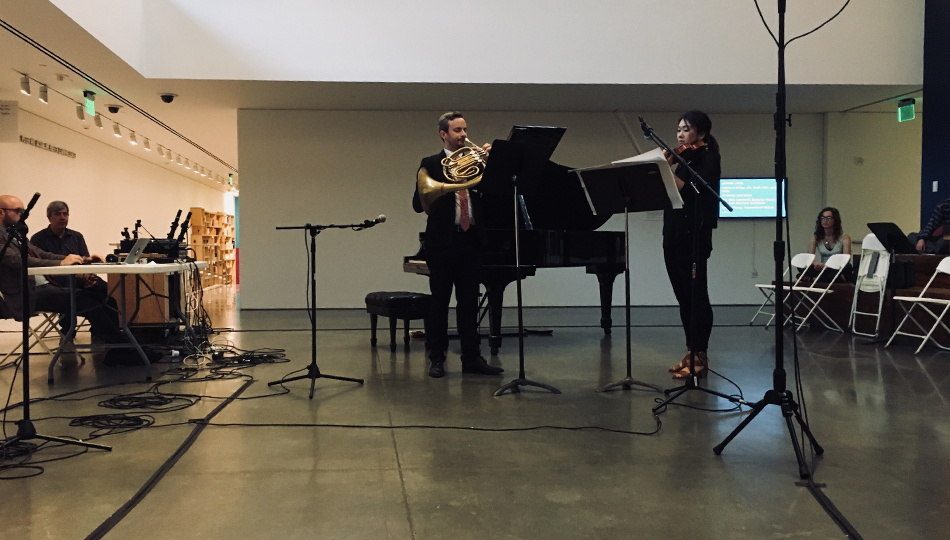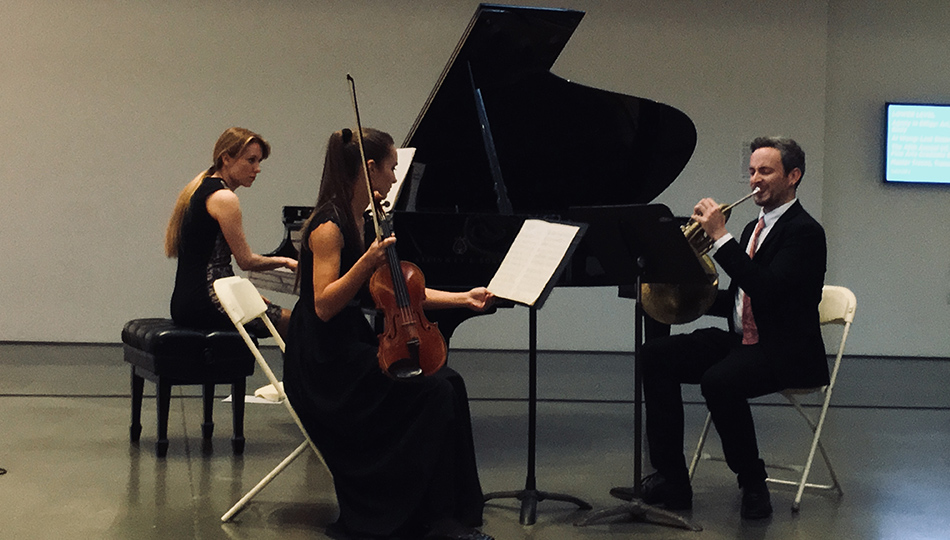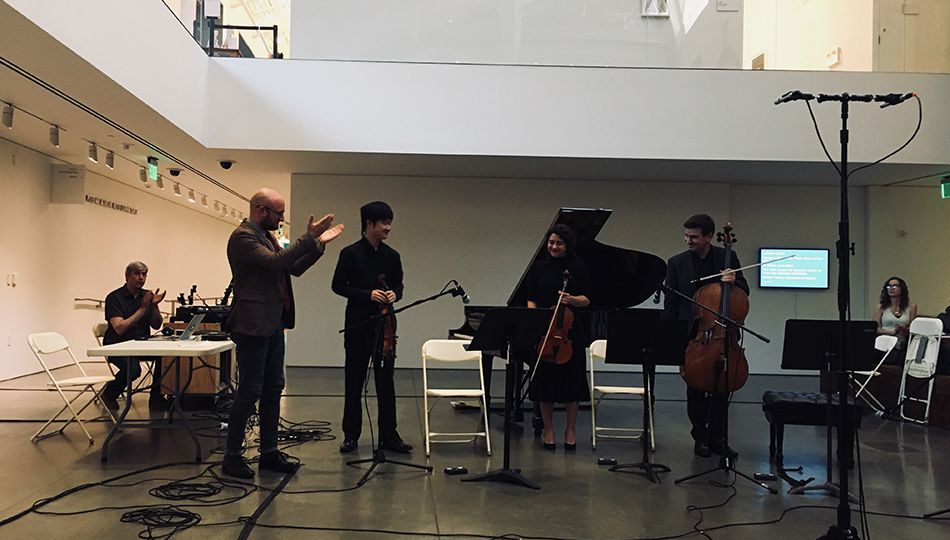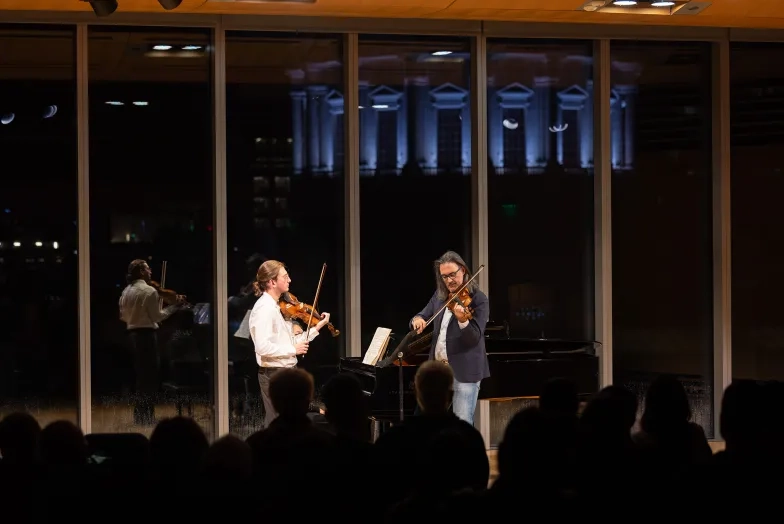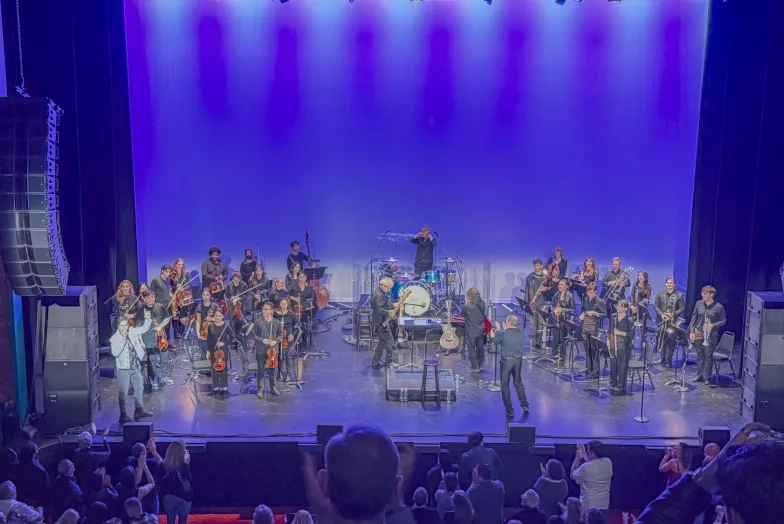SFCM Alums Explore New Directions in Programming
This past academic year was a whirlwind for the musicians participating in the Future of Orchestral Culture (FOC) Fellowship program. From learning about new concepts and techniques that aim to broaden and innovate the concert experience to implementing those very ideas in real-world performance settings, the Fellows brought a new sense of vision to Hamburg, Shanghai, and the Bay Area.
While the University of Music and Drama Hamburg served as the main hub for the Fellows—including SFCM alumni Craig Hansen '16 and Lotte Leussink '17—to explore new avenues in concert presentation, the program most recently brought the participants to the Bay Area to work with composer Anna Clyne and the Berkeley Symphony, putting on a unique concert at the Berkeley Art Museum and Pacific Film Archive (BAMPFA). The goal of this performance was to program the event in such a way that hit multiple points in diversity.
“The Fellows were tasked with creating a program of six works by living composers—two from each of their home cities of study—San Francisco, Hamburg, and Shanghai,” says Anna Clyne. “From each city, they were invited to program works by one established composer and one emerging composer, and at least half of the program was to be by female composers. The other parameter was that the instrumentation should be for the instruments played by the Fellows, with the option to expand the ensembles with musicians from the Berkeley Symphony, and also to create a program that did not exceed 90 minutes in duration.”
It was quite the task, but one that needed—and continues to need—taking on. Although the orchestral world has made great strides in diversity programming in the past few years, many see there is more work to do in broadening the range of composers that appear on concerts with regard to race and sex.
“We had parameters that were often very challenging, but in the end, rewarding because we were able to discover new composers and works,” says Craig Hansen. “This process was a very exciting opportunity to explore many compositions and composers I had never encountered before.”
In preparing for the concert, Clyne was in regular contact with the Fellows to track their progress and offer advice on how to successfully meet the requirements for the event.
“They sent several proposals for programs, which were then later refined following a Skype session between myself and the Fellows in Hamburg,” she says. “It was certainly a challenge to create a program with so many parameters, and what they produced was truly excellent—both in terms of diversity of compositional voices/styles and instrumental combinations. The Fellows gave careful consideration for the presentation of the concert—each pair of works from their respective cities was introduced by one of the Fellows, which is an engaging way to give a window into new music for a new audience.”
The sundry composition of the program focused on contemporary chamber works by living composers. Pieces such as Peilei Shang’s Durch das Fenster and Bright Sheng’s Seven tunes I heard in China represented the Chinese contingent of the program, and for the Hamburg contingent, Alessandro Anatrini (an FOC Fellow) had his own Quartet for String Trio and Electronics premiered on the concert in addition to the performance of Charlotte Seither’s 8 pieces of precious time. Representing the Bay Area was composer Julie Barwick with two pieces, Three Moods for Piano and Quivers, and SFCM faculty member (and Bay Area resident) Mason Bates with his Mainframe Tropics.
The FOC Fellows participated in the performances alongside members of the Berkeley Symphony. Hansen played horn on the works by Seither and Bates and Lotte Leussink played clarinet on the works by Shang and Barwick (Quivers). Ultimately, this event combined programming and performance participation, something not usually seen in presentations by professional orchestras.
“The culmination of this program is very interesting in and of itself,” says Berkeley Symphony Executive Director René Mandel. “They’ve come up with this eclectic, fascinating program journeying through three different countries, giving people this deep experience.”
Mandel feels this concert, which was more focused on chamber music, should act as a template for orchestras around the world. And since the Berkeley Symphony partnered with BAMPFA seamlessly for this event, he sees no reason why that collaborative model can’t be exported on a greater scale.
“Why can’t all these other orchestras do the same thing?” Mandel comments. He notes that orchestra musicians should have influence in programmatic decisions, ultimately creating a diverse concert season with more interesting programming that will attract a wider audience.
“[The orchestras] should be partnering with all these places where they have a very different kind of programming, and not just Beethoven and Brahms,” he continues. “It would really change a lot of the discussion in orchestras, and then what it would do is it would get musicians involved with programming, so perhaps, just maybe, the musicians might have a say in what’s going on on their regular concert series.”
It’s a great prospect, and one the FOC Fellowship program is looking to tackle. After a year of brainstorming, investigating, and experimenting with the concert experience, Hansen feels the industry is on the verge of a great change.
“I think the big thing I've learned this year is that there is no one way that orchestral culture is shifting and no one answer for the problems facing the future of orchestral culture,” he says. “One aspect of the program that I've found interesting is looking into the internal functions of orchestras in the three regions we worked in. I think a major shift in orchestra culture will take place internally—the role of music director, responsibilities of artists, management of artists.”
“I have realized that there is no one answer to a new orchestra culture,” notes Leussink. “Through our travels, meetings, and concerts, we have witnessed that there are some major differences between orchestral culture in the three regions (the Bay Area, Hamburg, and Shanghai). This doesn't only include the internal structures of orchestras, but also the role they play in society and how the communities reacts to them. This year has made me question every aspect of the orchestra, from the management side, directors, musicians, audience, funding, programming, etc. These questions have led to more questions rather than answers, but asking the orchestras we have met with and making more people aware (including musicians!) is a crucial starting point to build off of.”
With the intrepid attitudes of the FOC Fellows, the orchestral world appears to be on the right path.
